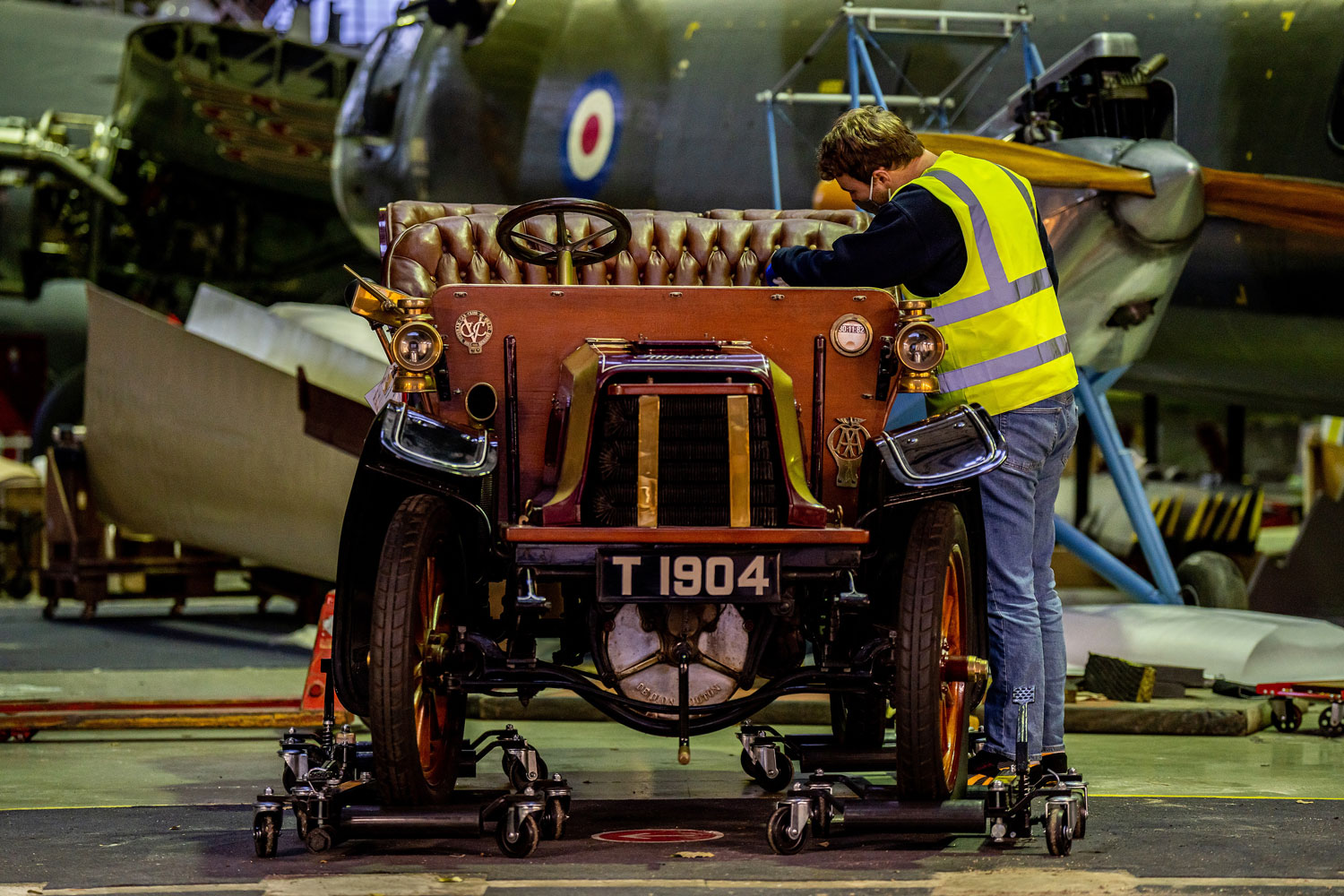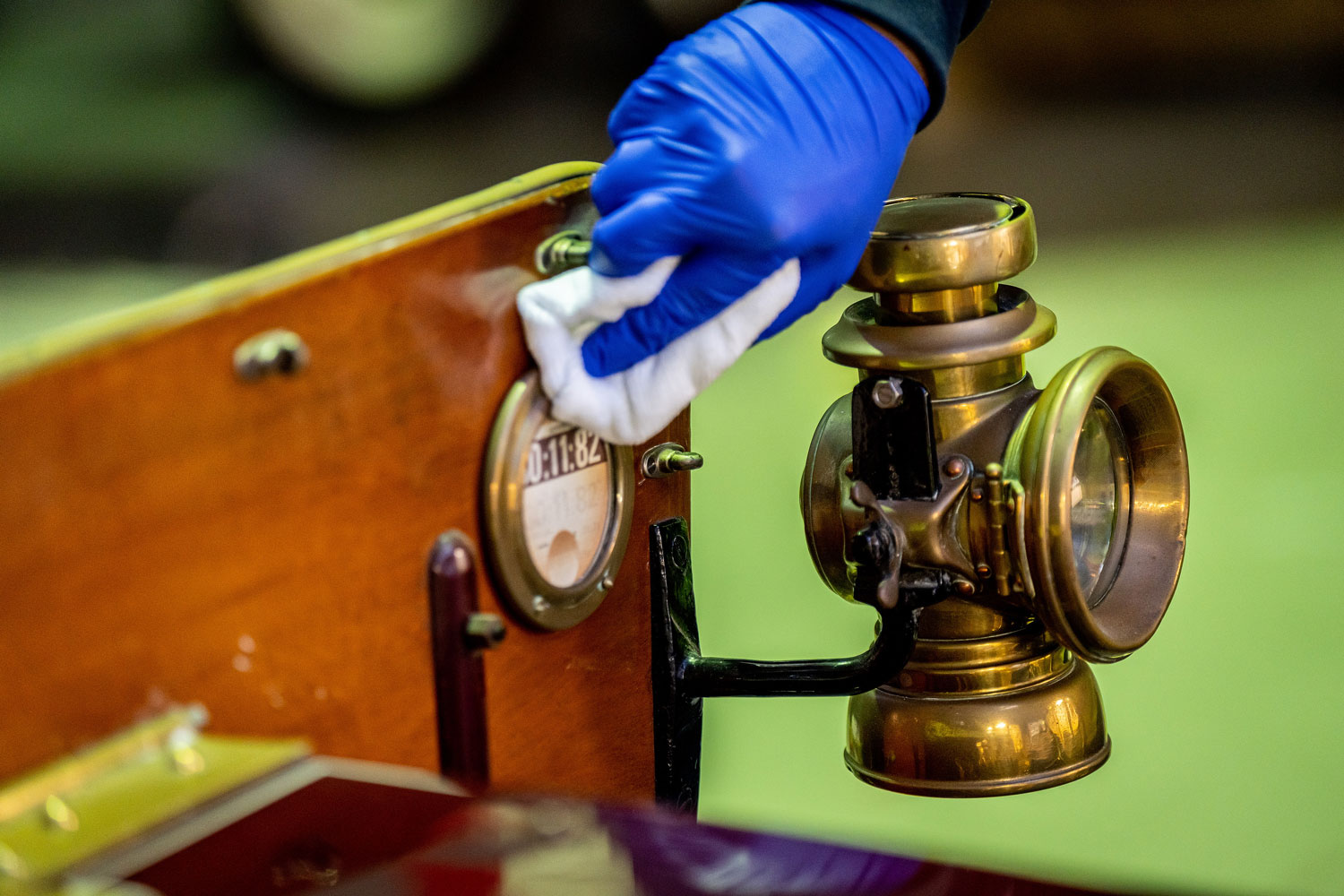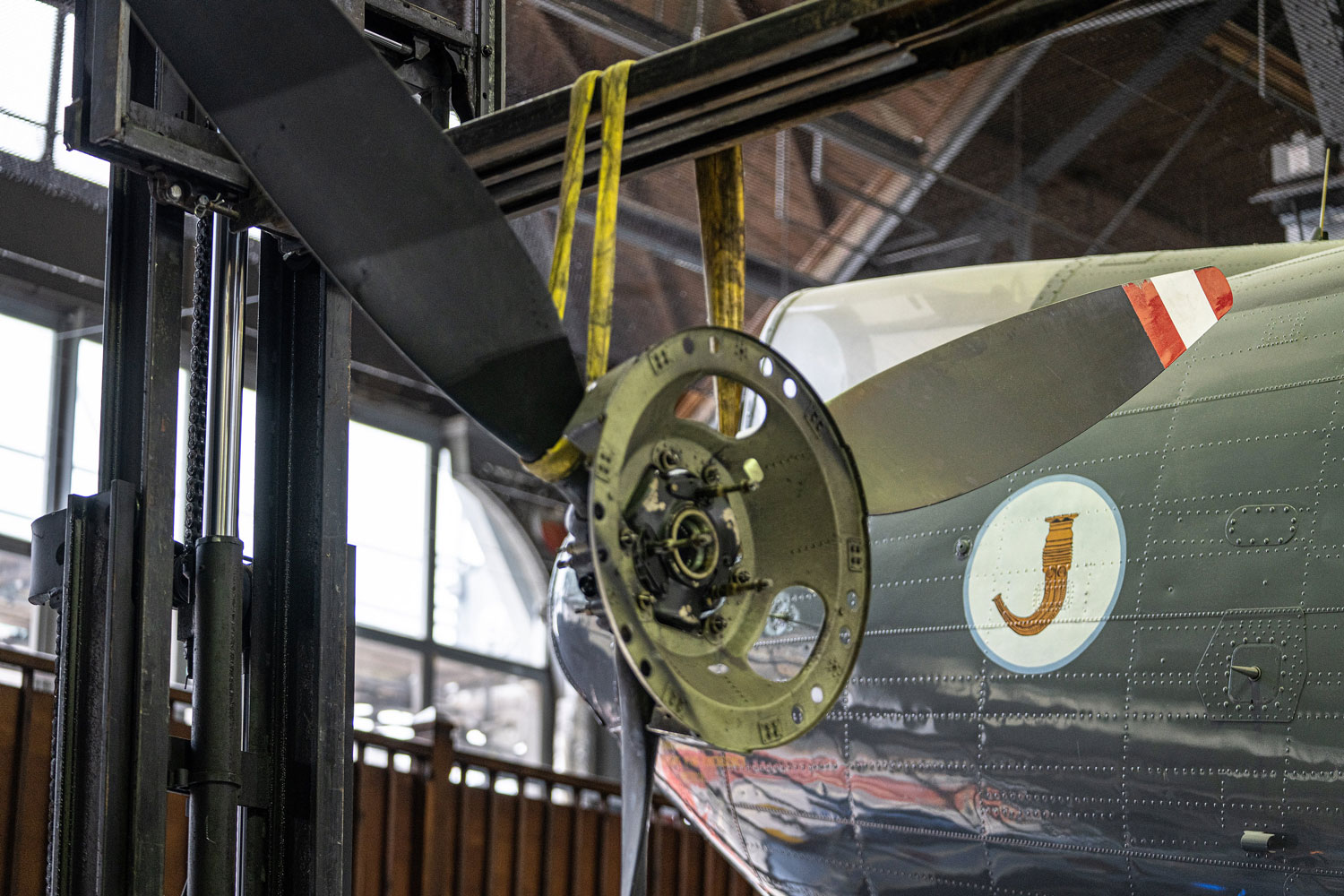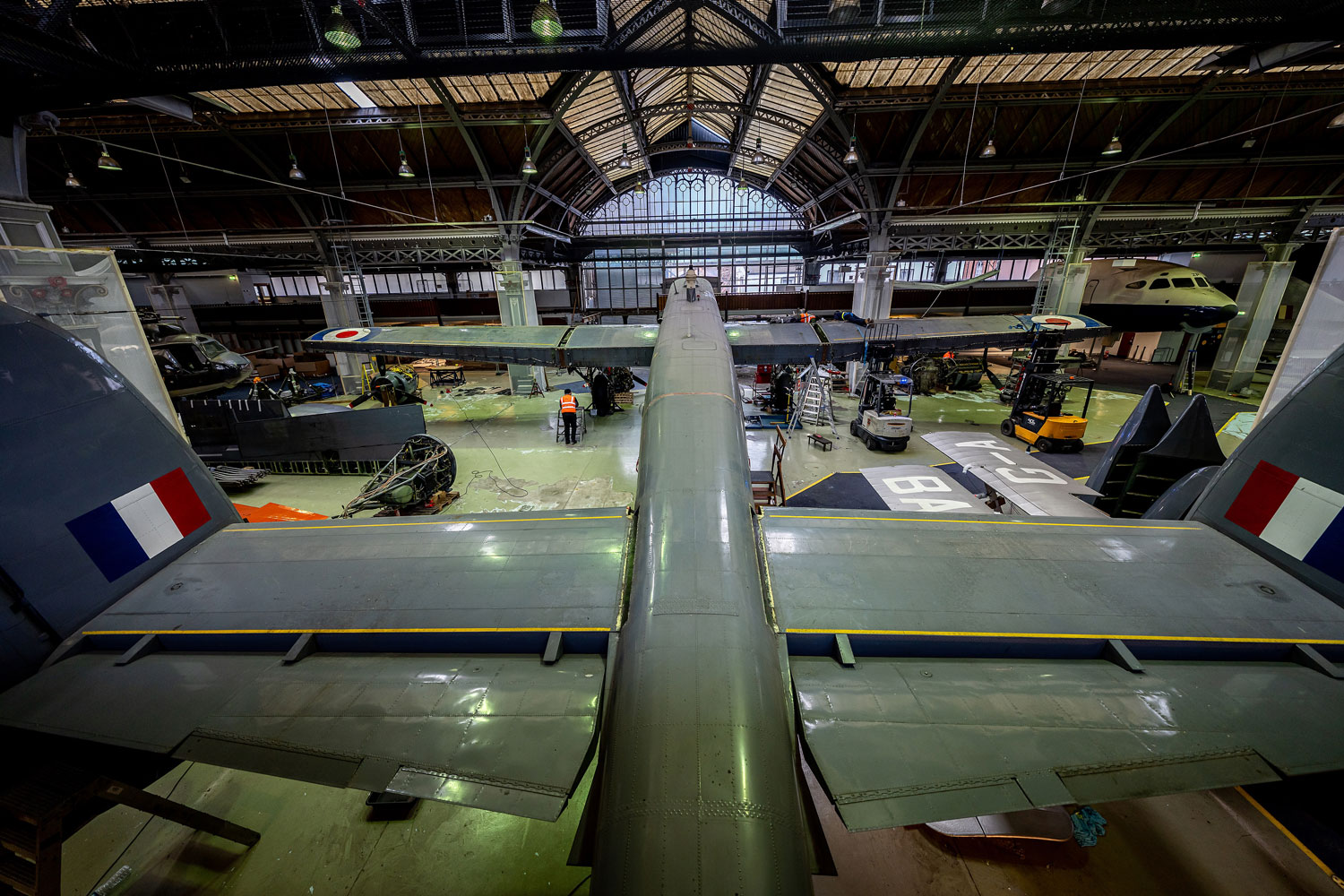Since its completion in 1878, Lower Campfield Market Hall, which is owned by Manchester City Council, has lived many lives. The City Council opened the Air and Space Museum in 1983 before it was taken over by The Science and Industry Museum, housing an impressive collection of planes, cars, motorbikes and bicycles. Now it is time for the next chapter in this building’s diverse history, but first the historic collections need to be moved and rehoused. Let’s look at how this is done.
Before anything can move it is important to double-check all of the objects’ unique identifying numbers and their associated parts. Some of the aircraft are completely intact, including details such as medical kits, and some of the cars are complete enough to still have their toolboxes and fire extinguishers (common with early cars).

Copyright: Science Museum Group. Credit: Charlotte Graham.

As part of the logistics process, some objects from the Science and Industry Museum collection have already been moved to different locations within the museum, including the 1905 Rolls-Royce motor car, used by Henry Royce himself, which is now on display in the Revolution Manchester gallery.
Some of the Science Museum Group objects will move to the National Collections Centre (the group’s purpose-built collections storage). Here they will be rested and cared for, as all objects benefit from a rest from display from time to time. Environmental factors such as light, relative humidity, dust and pollutants can all be detrimental in preserving objects for the future. Resting the collection in storage is a way of halting and controlling these factors in a way that being on display in a gallery cannot achieve.
Other objects are being returned to their owners, to be displayed in the future at new venues, many of which are across the North West. One example is the RAF Museum’s spectacular Avro Shackleton that will travel to its ‘spiritual home’ at the Avro Heritage Museum in Woodford, Stockport, the site of A.V. Roe & Co. Ltd, where it was originally made.

Copyright Science Museum Group. Credit Charlotte Graham.

Copyright Science Museum Group. Credit Charlotte Graham.
With so many objects and parts to go to new locations, everything has gone through a barcoding process, linked to the museum’s collections management system and can be updated with a quick zap when it moves. This ensures everything is accounted for and moved in a controlled manner. We also prepare and use a booklet of visual labels attached to each object containing all the essential information to be aware of at a quick glance when working with the object.
Before moving anything, we check the condition of everything and record the current state along with any conservation treatments carried out. It is important to record everything in the object history as this builds up its own important portfolio and the information can be carried on with the object for many years to come. This was our opportunity to thoroughly clean, using conservation techniques, and carry out consolidation processes to ensure objects are stable enough to move and remain well-preserved for many years to come.
Once ready to move, the objects can be categorised by size, dictating how they move. Small items are packed into boxes, using acid-free materials that will not emit gas and affect the objects inside. The boxes can then be stacked and strapped to pallets, for more effective movement and storage. Medium-sized objects can be strapped to pallets, and large objects such as bicycles can be attached to a special size pallet used by the Science Museum Group, using adapted bicycle stands that keep the objects upright and wheels and tyres off the ground so as not to take the weight. Loose parts need to be removed and labelled to prevent loss, and moving parts need to be tied into place to stop any movement that would result in damage.
We also have several objects to move that are too big to pack onto pallets (categorised as extra-large) but are still fragile and require careful consideration. Objects such as vehicles fall under this category and each one required a bespoke frame building for the under-carriage to enable them to move, but again keeping the pressure off the wheels and tyres. Over time, the rubber in tyres will deteriorate and perish. They cannot be used, and we display the vehicles raised slightly off the ground to help keep pressure off.
Of course, there are also the showstoppers of the gallery, the outsized objects; the aircraft. They are too big to move as they are, and there is no exit on the building large enough. We are working closely with historic aircraft specialists to sensitively dismantle the aircraft down to more manageable parts. Once out of the building and at their new homes, the aircraft will be rebuilt again ready for a new series of visitors to enjoy for many years to come.
Read more about the historic Lower Campfield Market building here.